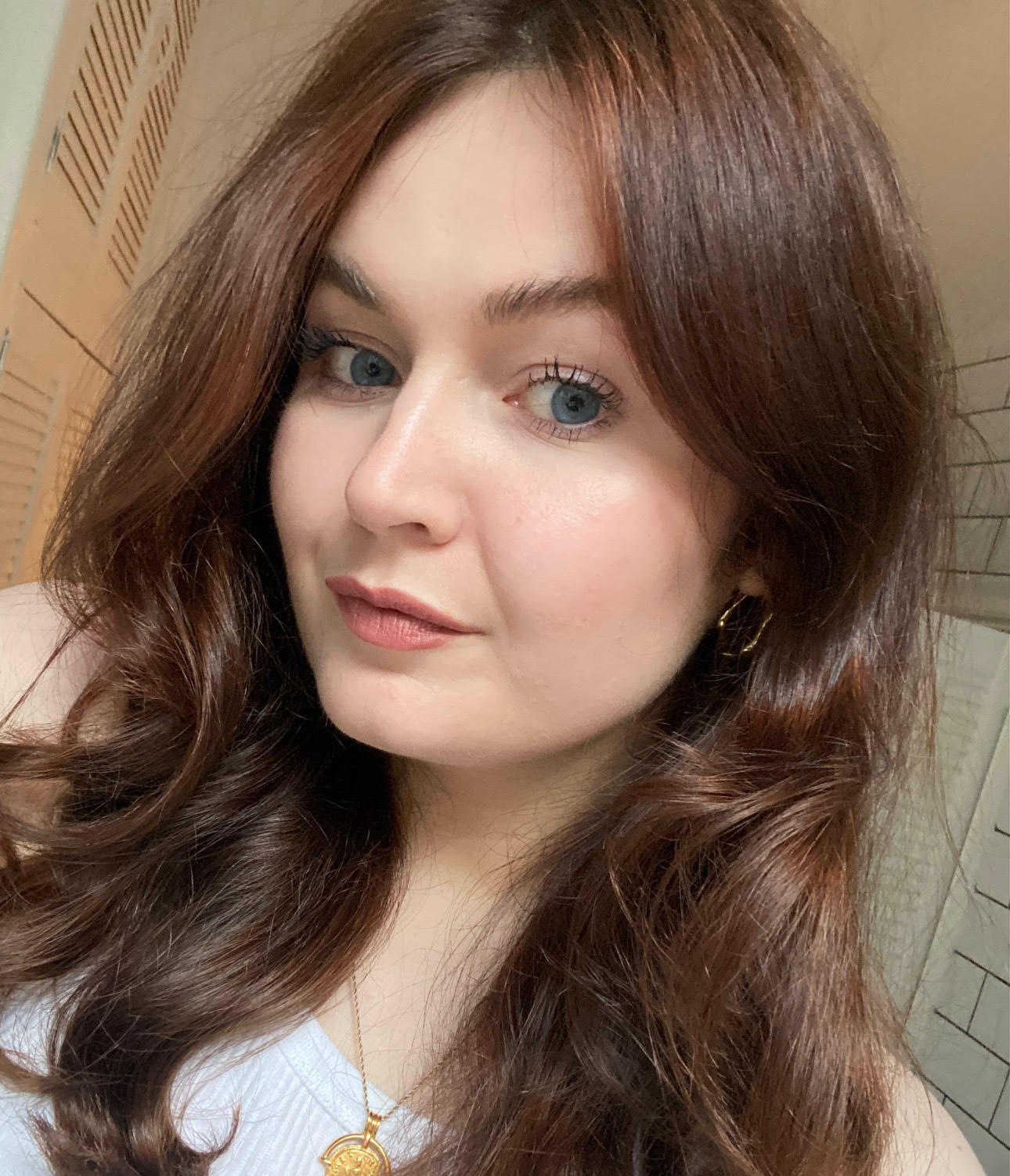After a UK Botulism Outbreak, Here’s the One Thing You Must Do Before Any Cosmetic Treatment
The expert-approved safety step that could save your skin (literally)


The discourse around aesthetic treatments, tweakments, injectables (or whatever you prefer to call them) has never been more pressing. Just last week, 28 people in the north-east of England have been diagnosed with potentially fatal botulism (a rare but life-threatening condition that attacks the nervous system) after having anti-wrinkle injections believed to have been fake versions of the regulated drug Botulinum toxin (more commonly known as Botox).
While campaigners and the medical community have worked tirelessly to urgently reform laws around non-surgical cosmetic treatments like Botox and dermal fillers, there is still so much more needed to adequately safeguard patients from 'botch-jobs' and unlicensed, unqualified practitioners.
Yet with demand for treatments showing no sign of slowing down, it's important to know how to protect yourself until the law catches up. In 2024, the UK aesthetics industry grew by 8.4%, with an astonishing 13.9 million people saying they were considering having a treatment in 2024.
Now, the last thing I would ever want to do is lecture you. But there are a few, simple steps you can take when it comes to cosmetic treatments. First and foremost is how important it is to book and attend an in-person consultation before you so much as think about getting near a needle. I know the desire to get results ASAP can be overwhelming, but you’ll be doing yourself several favours (which I’ll get into shortly) in the long run by being considered. Not only does this pre-treatment appointment give you chance to ask lots of questions and scope out the clinic, you are drastically reducing the chance of something going wrong—potentially saving money longer-term, too. I’ve met many aesthetic pros during my career and every single one would advise that you have one before any tweakment.
That’s why I’ve tapped into the expertise of two of the country’s top aesthetic doctors to give you a thorough run-down on the importance of the consultation—and the red flags you should steer well clear of. All this should help you get the best possible results from any aesthetic treatment. But first…
What is an aesthetic consultation?
Essentially, this is an appointment with any potential aesthetic service provider that allows them to assess you––and for you to ask your own questions about treatments. “A face-to-face consultation is the safety lock on any aesthetic procedure: it screens for medical or psychological red flags, matches treatment choice to a patient’s needs, goals and budget, and secures informed consent,” says aesthetic doctor Dr Sophie Shotter, founder of the Illuminate Skin Clinic. These dedicated, unhurried minutes let the clinician spot contraindications, manage expectations and explain risks and after-care, creating a treatment plan that protects both patient and practitioner. Without that step, a procedure can become a guess rather than a medical intervention. It’s also an important opportunity for practitioner and patient to get to know one another and ensure they’re aligned, and that both parties are confident that they are a good match.”
“I think anyone who doesn’t embark upon a formal consultation with a very well-experienced and well-trained provider is running the risk of a lack of safety and potential issues that may arise as a consequence,” aesthetic doctor and plastic surgeon Dr Ashwin Soni, founder of The Soni Clinic, tells me. “You really want to be able to not only address the options that may be available, but also to make sure that you can fully trust that provider and that you feel comfortable to put your face in their hands.” He adds that it’s all the more important if you’re new to aesthetics and haven’t had injectables, for example, before.
Celebrity news, beauty, fashion advice, and fascinating features, delivered straight to your inbox!
Before you book, you can research the following list to ensure you’re going to see somebody safe:
- Insurance: Check that the practitioner and clinic are insured. This means you are both covered if anything should go wrong with your treatment. If you can't find information about this online, call or email to ask for it.
- Premises: Can you tell from the website that your potential practitioner is operating out of a clinic setting, and therefore following the proper safety and cleanliness protocols?
- Qualifications & medical training: Do a background check into the qualifications of the practitioner and how many years they have been carrying out aesthetic treatments. If anything should go wrong—and there is always a chance things may go wrong, even in the most experienced of hands—medical training means your practitioner can respond appropriately in the event of an emergency.
- Registration: Check that doctors are registered with the General Medical Council, dentists with the General Dental Council, nurses and midwives with the Nursing and Midwifery Council, respectively.
- Responsiveness: How easy is it to get hold of the clinic to book and discuss? Are they responsive, professional and friendly? This can be a huge indication of what liaising with them will be like.
- Results: A practitioner or clinic’s website and social media pages are both useful here to take a look at their before and after imagery, including patient testimonies, to see that the results are similar to what you have in mind for yourself. Do you know anybody who has visited this clinic before? You could even reach out and ask them about their experience.
Why an aesthetic consultation is so important
In some cases, it’s a legal requirement
In some cases it’s not just highly advisable to have a consultation, but a legal requirement. There are treatments for which you must be assessed in person for it to be prescribed to you—such as Botox, which many people don’t realise is a prescription medicine. The prescriber must prescribe in person, even if they aren’t the one administering the treatment; a consultation over a telephone or video call does not count.
“With any prescriptive product or injectable, it is a legal requirement for a patient to undergo a formal consultation process,” says Dr Soni. “For example, in the case of a neuromodulator, such as Botox, or filler treatments and even some collagen stimulators, you need to make sure that you’ve had a formal consultation process beforehand. This is because a provider has to get them from an online pharmacy and actually prescribe that for you as an individual. [An in-person consultation is both] really important and a legal requirement.”
“This is simple if the person injecting you is a prescriber, but much more complex if you are choosing to have treatment with either a non-medical injector or a non-prescribing health care practitioner,” says Dr Shotter, who cites the GMC’s 2016 guidance that the prescriber “must personally examine the patient before issuing the first script and at every new course.” She adds: “If you are not given this face to face consultation, this needs to be viewed as a red flag.”
The treatment you have in mind may not be best for the job
You may have your heart set on one treatment you wholeheartedly believe will get you the results you’re after, but your aesthetics expert could suggest a treatment that is more likely to achieve them, be better suited to you, or both. That’s why they call the experts, the experts.
“I always say come in with an open mind,” says Dr Shotter. “This isn’t like going to get your nails done and asking for a particular colour or design. Imagine you’re going to see a Consultant Gastroenterologist – you wouldn’t ask them to prescribe you a particular drug, or demand they do a particular procedure. You’d have a conversation about what issues you are having, and would receive their advice on the best thing to do about it. You’d then be able to embark on the course of treatment that felt right based on that advice.”
I always say (as do many experts) that it is a very good sign that somebody knows what they are doing if they turn you down for a particular service and explain why. It shows that your wellbeing and good results are their priorities, not taking money off you for an unsuitable treatment.
You can suss out your potential practitioner
This section is twofold. Firstly, you’ll be able to do various safety checks that you can’t verify online, such as seeing with your own eyes that it’s a clean and sterile clinic environment (not a garden shed) and ask which products are used for the given treatment. “The clinic itself should look clean and clinical—single-use needles, proper sharps bins, spotless surfaces,” says Dr Shotter. “A thorough medical history should be taken, and a frank discussion of potential downtime and serious but rare complications signal responsible practice. Being aware of what could go wrong, and also asking how a practitioner would mitigate that, is prudent.”
But secondly, you’ll also get a feel of how the practitioner conducts themselves. Are they professional, letting you lead the way with the results you’d like to achieve and putting your mind at ease with any concerns? Or do you feel pressured and met with a “shopping list” of services? If it’s the latter, take your money to someone who won’t push you to “fix” things you didn’t want treated in the first place with potentially unnecessary treatments.
“Don’t feel pushed, says Dr Soni. “They shouldn’t be pushing procedures on you, they shouldn’t be telling you all the things they could do. It needs to align with what you want and [the consultation] should not drive insecurities in you as a patient. It should make you feel confident and comfortable that the provider has your best interests at heart and you feel confident to trust them with your face or body.” If the vibes are off, you can politely say you’re going to go away and think about your options and not book in.
You may change your mind
By scheduling a consultation, you can go away and think about it and make your decision pressure-free—which may even mean deciding not to have treatment straight away or having it at all. It’s much better to have the time to think it over so that you know you’re completely comfortable if and when you do go ahead.
I once had a consultation to discuss a treatment I was interested in (masseter Botox), was a perfect candidate, but didn’t end up actually having the treatment until the following year. Even though I was very well-informed on the safety of this treatment when done properly—and knew it was extremely likely to have a positive impact on my terrible jaw-clenching habit—I felt a bit hesitant and so waited until I felt completely comfortable to go ahead, then went back to the practitioner who carried out my initial consultation. And that really is how it should be with any treatment.
It could even save you money
I don’t mean if you decide not to have treatment. By sussing out your provider ahead of time—and doing your homework on their qualifications, clinic and results—you are more likely to have a successful one. Many aesthetic practitioners have told me that they regularly carry out procedures that are corrective work, meaning patients have spent money on top of their initial treatment fees to “fix” poor results. A consultation gives you the chance to ensure you and your practitioner are on the same page (and that you trust them to get those great results) and minimises the risk of unwanted results.

Lucy is a freelance beauty editor and contributor at Marie Claire, and has also written for titles including Cosmopolitan, Refinery29, Glamour and woman&home. She was previously Marie Claire’s junior beauty editor. During her career, she’s covered everything from backstage beauty at fashion week to interviews with famous faces like Drag Race royalty and Little Mix. As for her beauty ethos, she’s a big advocate for not having to spend a fortune on beauty products to get good results. When she’s not got beauty on the brain you’ll probably find her reading or Netflix-ing.